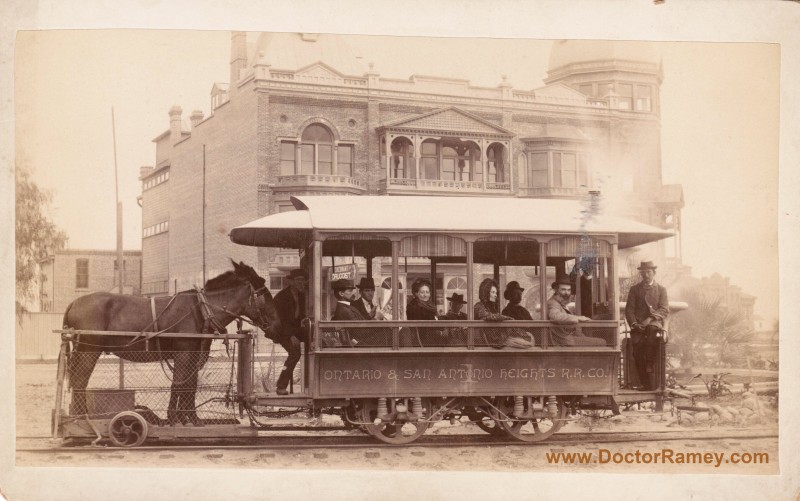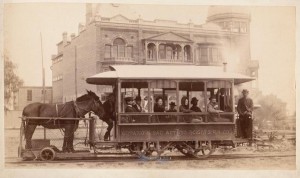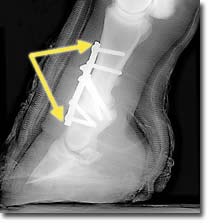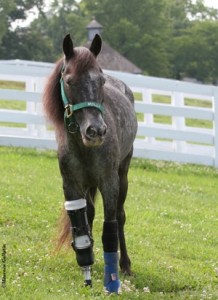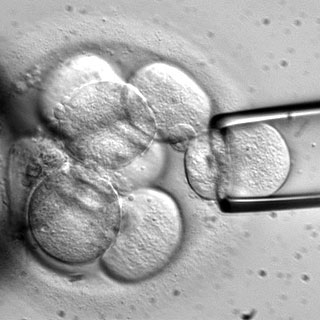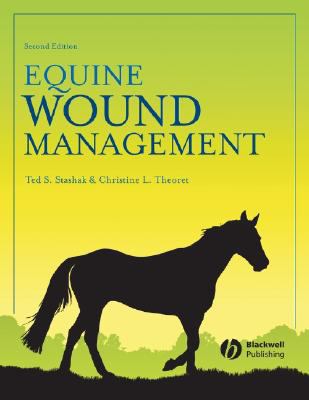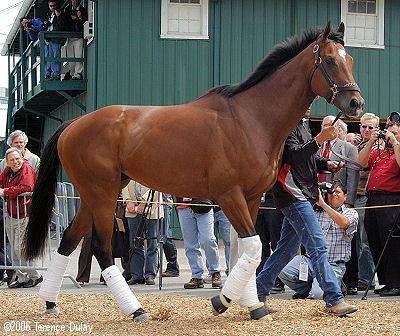It’s kind of cool, being a veterinarian. Most people have a general appreciation for what you do. I mean, taking care of animals (in my case, horses), really is a pretty great thing, and most people seem to appreciate you for it. However, most people don’t know much about veterinary medicine – and particularly horse medicine. So, upon meeting me, and in starting up a conversation, they often want to jump in with a question of what-would-seem-to-be mutual interest. So, when learning that I’m a veterinarian who takes care of horses, there’s one question that seems to crop up all of the time as an icebreaker. People always ask, “Why do you have to put a horse to sleep if it breaks its leg?”
Still, even if they haven’t been around horses, people are aware of them as, say, arguably the most important animal in human history. They’ve seen them; in old westerns, on TV, in old pictures, and in various urban settings where horses happily take blanket-covered couples on evening tours. People care about horses! Thus, the question comes from a combination of unfamiliarity, a bit of compassion, and a bit of curiosity as to why fractures – which are generally handled rather routinely in most other species, seem to be such a big problem in horses.
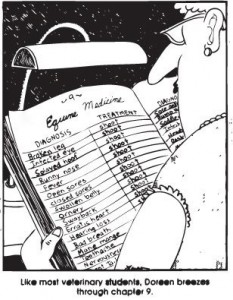 Putting horses to sleep seems to also have been a pretty well-accepted solution to the majority of horse health problems. People apparently think that working on horses can be a pretty hopeless endeavor, especially when it comes to their legs. Such despair seems to be pretty ingrained. You know, in the movies, the horse gives his all to save the hero, breaks his leg in the process, and gets shot for his efforts. Racehorses break their legs, and sometimes have to get put to sleep (for various and sundry reasons that we’ll get into). Heck, the cartoonist Gary Larson even got his two cents in.
Putting horses to sleep seems to also have been a pretty well-accepted solution to the majority of horse health problems. People apparently think that working on horses can be a pretty hopeless endeavor, especially when it comes to their legs. Such despair seems to be pretty ingrained. You know, in the movies, the horse gives his all to save the hero, breaks his leg in the process, and gets shot for his efforts. Racehorses break their legs, and sometimes have to get put to sleep (for various and sundry reasons that we’ll get into). Heck, the cartoonist Gary Larson even got his two cents in.
Yet, the fact is, that you don’t always have to put a horse to sleep when he breaks his leg, although, sometimes, you may not have any choice. Still, the answer to the question is complicated. And, unfortunately, in my experience, the nuances of this discussion cause the people who asked it to almost immediately regret having done so, but since you’re here, and have made it this far, here we go.
1. What kind of break are we taking about? In a way, to say that a horse broke his leg is sort of like saying that a person has cancer. For people, cancer can be everything from a little spot on the end of the nose that the dermatologist shaves off in a quick office visit, to the chilly realization that your affairs had better be in order.
Some “breaks” really aren’t that big a deal. For example, I’ve seen a couple of horses that cracked the big bone above the knee, in the forearm (the radius). The horses were very lame. The leg was, in fact, broken. Looked just horrible on X-rays. And, after a couple of months in the stall, the leg healed. The bones didn’t displace. The horses were fine. Uncommon fracture, to be sure, but not dead as a result, either.
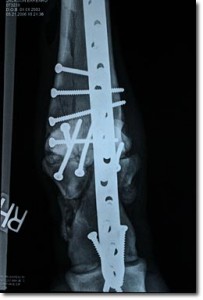
X-ray of Barbaro’s right hind leg, after 7 hours of surgery. Sort of like trying to screw pieces of Jell-o together, actually.
Other breaks, however, are an enormous problem. That’s because of the forces generated on the horse’s legs when they are running. A horse is pretty much built to the limit of it’s tolerance – with its muscular body, and relatively skinny legs, it really can’t be much bigger than it is. As such, when a horse is running, turning, jumping, pivoting, or otherwise exercising, it’s putting stresses on its limbs that are right up to the maximum of what they can take.
When those stresses exceed what the horses limb can take – BOOM! – an explosion goes off in the horse’s leg. As such, the bone not only fractures into a bunch of pieces, but blood vessels can tear, tendons can rupture, and ligaments can shear off the bone. Under such circumstances, there’s not really anything left to fix. The limb of a person who had sustained such an injury would usually be amputated – that’s something that’s rarely done in horses.* But even under such catastrophic circumstances, people sometimes try to fix fractures; thus, the story of Barbaro, the 2006 Kentucky Derby winner who, despite the best efforts of the best surgeons, was unable to recover from his fractured leg.
2. Where’s the break? A crack in the middle of a long bone can sometimes heal with rest. But a crack that’s into a joint will ultimately destroy the joint. If that joint is a joint that doesn’t move a lot, a fracture may not be a big deal. So, for example, a horse with a broken pastern can sometimes be saved by screwing the broken bones together an fusing the joint – turning two bones into one, as it were. Horses can move pretty normally – even perform – with a fused pastern. But it’s a lot harder for horses to get around if their fetlock joint has been destroyed.
The higher up the leg you go, the harder it gets. Once you start dealing with fractures of the upper leg, repairs are pretty much impossible. For one reason, that’s because they’re so hard to get to. If you wanted to try to fix a horse’s femur (in the hind leg), or it’s humerus (in the front leg), you’d have to dissect through so much tissue trying to get to the fracture that you we’re trying to fix that you’d essentially be destroying the leg anyway. And the forces placed on the implants in such areas are almost unimaginable – the muscles of the horse’s legs can pull apart the repaired tissues, bending metal screws and plates as if they were pieces of licorice.
3. How bad is the fracture? The worse the fracture, the harder it is to deal with. Some fractures are described as a “bag of glass.” In such fractures, there are so many pieces of bone that they can’t be put back together. Others, such as the ones in the radius that I described, are pretty simple – just a crack that has to heal. Even the best surgeon can’t fix the worst fractures – there’s not really anything left to fix.
 4. What’s the horse used for? Sometimes, you might be able to fix a fracture, but you’d end up with a pasture ornament. So, for example, if you had a horse that fractured its fetlock, while it might be possible to fuse the fetlock, and save the life of the horse, you’d also have a horse that you couldn’t really ride (I’m sure there may be an exception somewhere), but it would certainly be a horse that would always walk around with a limp. In the case of a valuable breeding stallion, the cost might be worth it. But the fact is that if, say, a 5-year-old barrel horse is rendered unusable as a result of a fracture, many people may not feel that the cost of keeping the horse for the next 20 years is worth the price of the repair.
4. What’s the horse used for? Sometimes, you might be able to fix a fracture, but you’d end up with a pasture ornament. So, for example, if you had a horse that fractured its fetlock, while it might be possible to fuse the fetlock, and save the life of the horse, you’d also have a horse that you couldn’t really ride (I’m sure there may be an exception somewhere), but it would certainly be a horse that would always walk around with a limp. In the case of a valuable breeding stallion, the cost might be worth it. But the fact is that if, say, a 5-year-old barrel horse is rendered unusable as a result of a fracture, many people may not feel that the cost of keeping the horse for the next 20 years is worth the price of the repair.
5. How much is fixing the break going to cost? Fixing a horse’s broken leg isn’t cheap. Even under the best of circumstances, a successful fracture repair is going to cost many, many thousands of dollars (those screws and plates that you see in the X-rays aren’t cheap!). As such, the decision of whether to try to repair a horse’s fracture often comes down to a single question: “Do you want this horse, or do you want a horse.” If you’re being asked to spend, $20,000.00 to fix your horse’s broken leg, and you’ll end up with a lame horse, well, to be simply factual, you can buy a really nice replacement horse – a horse that won’t be lame – for the same money. Plus, there’s no guarantee of the outcome, even under the best of circumstances.
The fact is that limb fractures in horses can have terrible outcomes. But there can also be some wonderful success stories, ending with sound horses, or even lame horses that live happy and long lives as pets and companions. The decision as to whether to try to fix a horse’s broken leg is usually complicated – but you sure don’t always have to put them to sleep!
______________________________________________________________
* There have reports of a few dozen horses who have had limbs amputated. For example, CLICK HERE TO learn about Molly the Pony, who survived Hurricane Katrina, lost a leg, and has a great life . But it’s not a procedure to consider for anyone who is unwilling to devote a lot of time and money to it, and Molly is certainly a lucky pony.

